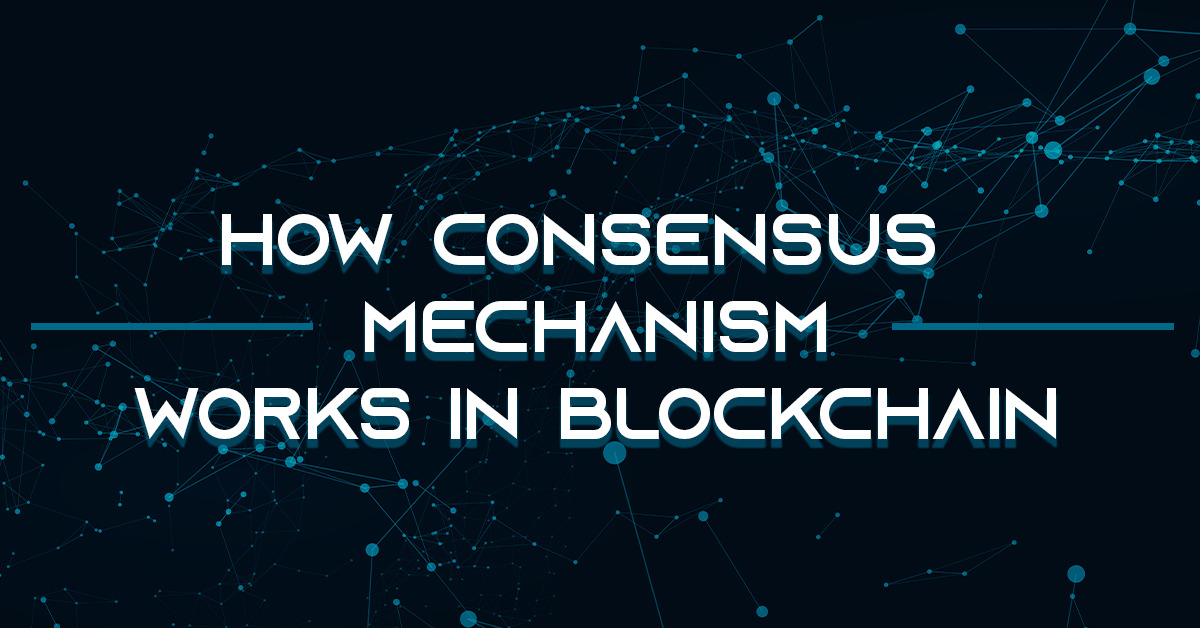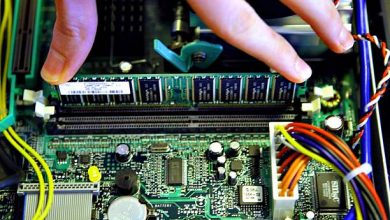How Consensus Mechanism Works In Blockchain

How Consensus Mechanism Works In Blockchain: It is necessary for there to be a method for resolving disputes. This refers to a distributed peer-to-peer network where data is saved, managed, and shared across numerous computers worldwide. Consensus mechanisms, or shared protocols, are crucial for decentralized platforms that maintain a network of nodes. Keep scrolling.EnoughInfo.com

What Is a Consensus Mechanism?
A consensus mechanism is a process used by a decentralized network to achieve agreement on a single version of the truth without the need for a central authority. In a decentralized network, multiple participants (also called nodes) verify and validate transactions, and they need to agree on a common record of these transactions. Consensus mechanisms ensure that all nodes in the network have the same view of the system, and prevent double-spending and other fraudulent activities.
Overall, consensus mechanisms are a crucial component of decentralized systems, as they enable the network to function in a trustless and decentralized manner, ensuring security and reliability.How To Make Money With Blockchain Technology
FAQs & Answers
1. Which Mechanism for Consensus Is Best?
The ideal consensus method depends on the users’ requirements. Ethereum’s community considers proof of stake as the most suitable, while Bitcoin favors proof of work. However, alternative methods may be better suited for corporate, commercial, or personal use.
2. Can consensus mechanisms be modified in blockchain networks?
Yes, consensus mechanisms can be modified in blockchain networks. Although it requires a hard fork, it is a significant change to the protocol. Changing the consensus mechanism can have significant implications for the security, scalability, and decentralization of the blockchain network.
3. Can different nodes in the network use different consensus mechanisms?
No, all nodes in the network must use the same consensus mechanism. This is to achieve distributed consensus on the current state of the ledger. Using different consensus mechanisms would result in different nodes having different views of the ledger. And this would undermine the security and integrity of the blockchain.
Why Consensus Mechanisms are Important in Blockchain?
Consensus mechanisms act as reward systems for good conduct in addition to their technical use as a failsafe for blockchain or globally dispersed networks and systems. They not only act as a decentralized fail-safe to keep a system operational, but they also foster trust in a climate of distrust.How to Make Money in the Bull Market( The Ultimate Guide)
Here are some key reasons why consensus mechanisms are important in blockchain:
- Security: Consensus mechanisms ensure the security and integrity of the blockchain by preventing double-spending and other fraudulent activities.
- Decentralization: Consensus mechanisms enable decentralized networks, where no single entity or group has control over the system.
- Trustlessness: By using a consensus mechanism, nodes in a blockchain network can come to an agreement without relying on trust or a central authority.
- Reliability: Consensus mechanisms ensure that all nodes in the network have the same view of the blockchain, and prevent forks or divergences in the ledger.
- Scalability: Some consensus mechanisms, such as Proof of Stake, can be more energy-efficient and scalable than others, such as Proof of Work.
Types of Consensus Mechanisms
There are several types of consensus mechanisms used in blockchain networks. Here are some of the most common ones:
Proof of Work (PoW)
In a PoW consensus mechanism, nodes in the network compete to solve complex mathematical problems to validate transactions and create new blocks. The first node to solve the problem is rewarded with newly minted cryptocurrency. PoW is the consensus mechanism used in the Bitcoin blockchain.
Proof of Stake (PoS)
In a PoS consensus mechanism, nodes validate transactions and create new blocks based on the amount of cryptocurrency they hold (their “stake”) in the network. The more cryptocurrency a node holds, the more likely it is to be chosen to validate transactions and create new blocks. PoS is used in several blockchain networks, including Ethereum.
Delegated Proof of Stake (DPoS)
DPoS is similar to PoS, but instead of every node being eligible to validate transactions and create new blocks, a smaller set of nodes (called “delegates” or “witnesses”) are elected by the network’s stakeholders to perform these tasks. DPoS is used in the BitShares and EOS blockchain networks.
Practical Byzantine Fault Tolerance (PBFT)
PBFT is used in private or permissioned blockchains, where the participants are known and trusted. In PBFT, a node is chosen to be the leader, and the other nodes validate and agree on its proposed transactions and blocks. PBFT is used in the Hyperledger Fabric blockchain network.How To Make $10000 With NFT Art( 2023 Update)
Proof of Authority (PoA)
PoA is used in private or permissioned blockchains. In PoA, a small set of trusted nodes (called “validators”) are authorized to validate transactions and create new blocks. Validators are chosen based on their reputation or identity, rather than the amount of cryptocurrency they hold. PoA is used in the Celo and POA Network blockchain networks.
These are just some examples of the various consensus mechanisms used in blockchain networks. Each has its own benefits and drawbacks, and the choice of which to use depends on the specific needs and goals of the network.
How Consensus Mechanism Works In Blockchain
Blockchain’s consensus mechanism is crucial in maintaining a shared ledger view among network nodes, preventing fraudulent activities like double-spending and Sybil attacks. There are several types of consensus mechanisms used in blockchain, but the general principle is the same: to achieve distributed consensus on the current state of the ledger.
Here’s a more clear overview of how consensus mechanisms works in blockchain:
1. Initiating a transaction
A transaction is initiated by a user or a smart contract and is broadcast to the network. The transaction contains information such as the sender, recipient, and the amount of cryptocurrency being transferred.
2. Transaction validation
Nodes in the network receive the transaction and validate it to ensure that it meets certain criteria. For example, the transaction must have a valid signature, must not be a duplicate, and the sender must have enough cryptocurrency to complete the transaction.
3. Pool of unconfirmed transactions
Once the transaction is validated, it is added to a pool of unconfirmed transactions waiting to be included in a block.
4. Block validation
Nodes in the network compete to validate the next block of transactions. The approach to competition varies according to the consensus mechanism. For example, in Proof of Work, nodes compete to solve a cryptographic puzzle, while in Proof of Stake, nodes are selected to validate the block based on the amount of cryptocurrency they possess.
5. Block creation
Once a node validates a block, it broadcasts the block to the network. The block contains a set of validated transactions, a reference to the previous block, and a unique identifier called a “nonce”.
6. Block validation
Other nodes in the network receive the block and validate it to ensure that it meets certain criteria. For example, the block must contain valid transactions, the nonce must be correct, and the block must have a valid reference to the previous block.
7. Consensus
Once the majority of nodes in the network have validated the block and added it to their local copy of the ledger, consensus is achieved. The block becomes part of the blockchain, and the cryptocurrency transferred in the transactions is moved from the sender’s account to the recipient’s account.30 Ways To Make Money Online And Offline
8. Reward
The node that validated the block is rewarded with newly minted cryptocurrency as an incentive for participating in the validation process. Mind blowing!!!
The advantages and disadvantages of using a consensus mechanism in blockchain?
Advantages of using a consensus mechanism in blockchain
1. Security: Consensus mechanisms ensure that all nodes in the network agree on the current state of the ledger, which prevents fraudulent activities such as double-spending and Sybil attacks.
2. Decentralization: Consensus mechanisms allow blockchain networks to operate without a central authority, which makes them more decentralized and resilient.
3. Immutability: Once a block is added to the blockchain, it cannot be altered or deleted. Thereby ensures the integrity and immutability of the ledger.
4. Efficiency: Consensus mechanisms enable decentralized and efficient validation of transactions and blocks, minimizing the necessity for intermediaries and speeding up transaction processing.
5. Incentives: Consensus mechanisms provide incentives for nodes to participate in the validation process, such as rewards in the form of newly minted cryptocurrency.
Disadvantages of using a consensus mechanism in blockchain:
1. High energy consumption: Proof of Work and similar consensus mechanisms demand significant computational power and energy usage, posing environmental challenges.
2. Centralization: Delegated Proof of Stake and similar mechanisms may cause centralization. This is where a small group of nodes hold excessive control and power over the network.
3. Scalability: Consensus mechanisms may restrict blockchain scalability since validating each transaction and block demands computational power and time, which can delay network growth as it becomes larger and more complex.
4. Hard forks: Replacing a blockchain network’s consensus mechanism necessitates a challenging and complicated hard fork protocol implementation.
5. Complexity: Consensus mechanisms can be complex and difficult to understand, which can be a barrier to adoption and participation for some users and developers.
Conclusion
As the world increasingly adopts digital technologies, consensus mechanisms have become essential for distributed ledgers, databases, and blockchains. These systems provide financial access to underserved populations, tokenize tangible assets on ledgers, and meet corporations’ demand for data protection. Consensus mechanisms ensure the accuracy and security of data inputs and outputs, leading to automatic audits of digital transactions. By eliminating the need for oversight and human intervention, these mechanisms promote trust in transactions and prevent fraudulent activities.
Recommended;
How to use chat gpt for blogging to Make $70,000 Per Month?
How To Make Money With Blockchain Technology
21 Great Ways to Save Money(2023 Guide)




